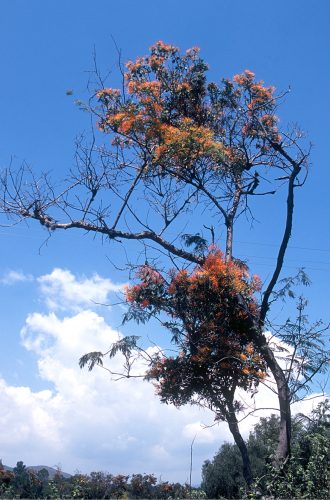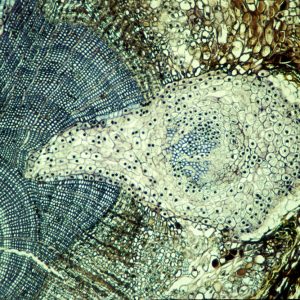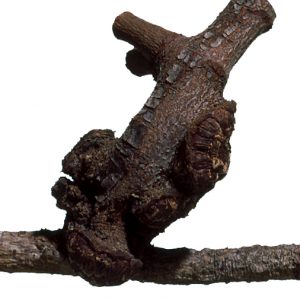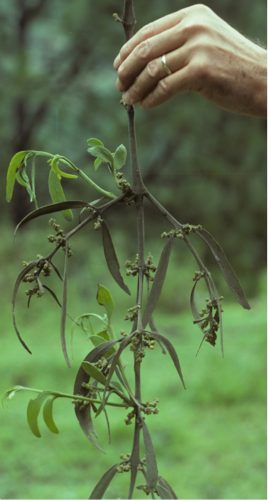Research

Psittacanthus
The main focus of my research has been the study of host/parasite tissue relationships in mistletoe, primarily Phoradendron and Arceuthobium . Under the “tissue relationships” umbrella I include developmental, structural, functional, and comparative studies of haustorial systems. Since most, and in some cases all, of the haustorium is embedded within the host branch the terms “endophytic system” and “endophyte” can also be used to describe the haustorial system. In more recent years, and in cooperation with Carol Wilson, I have turned my attention to the largest mistletoe family, Loranthaceae, with hopes of determining just how the aerial habit evolved in the family as well as the number of times this has occurred. Together, Carol and I have also studied aspects of seedling development, biogeography, and phylogeny of mistletoe. We have a large dried and vouchered collection of woody haustoria collected during more than one dozen trips to regions where Loranthaceae are present, including fieldwork in Australia, New Zealand, SE Asia (incl. Borneo), China, Africa, and Central and South America. Areas of current research also include the study of epiparasites utilizing anatomical studies of the haustorial connection between parasitic host and epiparisite, host preferences, and distributional occurrences.

Phoradendron juniperinum

Pedistylis haustorium

Phoradendron longifolium and P. durangense
